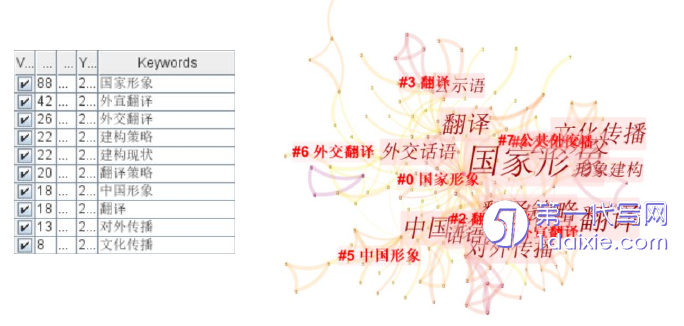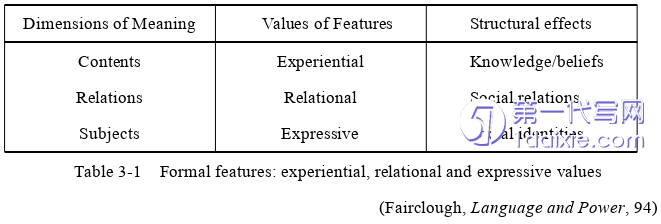本文是一篇英语论文,本研究旨在探讨《中国日报》英文报道所描绘的中国国家形象的主要特征及其所反映的意识形态,旨在揭示报告中所体现的形式属性与其背后相应的社会文化因素之间的深层联系。
Chapter 1 Introduction
1.1 Research Background
After more than half a century’s development,translation studies have stepped into anew stage which is characterized by interdisciplinary trend and a more independent style.According to Holmes and Toury(Munday,2014),taking the paper Corpus linguistics andtranslation studies:implications and applications by Mona Baker(1993)as the milestone,Corpus-based Translation Studies have become one of the most promising research fieldsnowadays.Taking the corpus-based approach,this thesis would explore the specific featuresof China’s national image under the COVID-19 pandemic built by China Daily.Besides,todelineate a more complete image of China,the comparison between China Daily and TheNew York Times would be meaningful and necessary for this research.
Emerging from the end of 2019,COVID-19 has dealt an extremely big blow to theeconomic and social development of the whole world.Since COVID-19 became worldwide,some countries have propagated the“China threat theory”,denouncing China’s politicalsystem and affirming that China is to blame for the epidemic.Some countries even call it“theChinese Virus”.Considering the national image of China has often been pictured into adistorted and negative one currently,growing attention has been drawn to the cultural softpower of China.As a consequence,the research on China’s national image has become a hottopic nowadays.As the official English newspaper available globally in China,China Dailyexerts a prominent influence on the self-construction of the national image of China.Therefore,this thesis will take the translated English reports about China’s national imageunder the pandemic in China Daily and relevant reports with the same topic and time span inThe New York Times as the research subject.
1.2 Research Objectives
By setting the time span from January 1,2020 to January 21,2022,the bilingual reports about China’s image under the coronavirus will be collected and a small corpus composed ofall the translated English reports in China Daily will be established(the CD corpus).Besides,the relevant reports with the same topic and time span would be collected from The New YorkTimes to form another corpus(the NYT corpus).Through comparing the high frequencycontent words,the keywords,the adoption of common modal verbs in the CD corpus andNYT corpus respectively and analyzing common collocates and particular concordance linesof high frequency words in the CD corpus,this research aims to conclude the particularcharacteristics of China’s national image depicted by China Daily by qualitative andquantitative methods.In addition,the main causes for the national image of China built byChina Daily would be explored by analyzing the relationships between the formal propertiesof the reports and the sociocultural factors behind it.
Chapter 2 Literature Review
2.1 National Image and Translation Studies
2.1.1 The Definition of National Image
According to Hu Kaibao,national image signifies the recognition and comment of theindividual,organization or the whole society in the international community towards onespecific nation.It can be divided into image built by ourselves and the other.The former onemeans the Chinese’s impression to their own nation.While the latter one stands for the overallevaluation of international people,foreign media or government on China.Judged fromdifferent fields,national image can be grouped into the image of the government,the politicalparty,the leader,the enterprise or the cultural image,territorial image and so on(Hu Kaibao,2018).
2.1.2 The Influencing Factors in Building National Image
There are various factors influencing the process of national image construction.Judgingfrom the definition,national image is mainly composed of three elements:the reality of onenation,the diffusion process of the information reflecting the nation’s truth and theinternational public as the evaluation subject.As a consequence,the influencing factors innational image establishment can be divided into three types similarly:the real conditioninside one nation,the course of information spread,especially the international exchangeactivities,and the existing impression and mindset of the international public(Han Lei et al.,2007).

2.2 Corpus-based Critical Translation Studies and Relevant Studies
2.2.1 The Definition of Corpus-Based Critical Translation Studies
After corpora emerge,it was used by linguists more frequently.While with theappearance of polysystem as a new perspective,the changes from equivalence to norms andthe rise of descriptive translation studies(Baker,1993),corpus-based approach has turned intoa beneficial access in translation studies.There are two prerequisites to elucidate what iscorpus-based critical translation studies:corpus translation studies and critical translationstudies.Taking corpus translation studies as the methodology,corpus-based critical translationstudies also employ descriptive and corpus-based approach.While critical translation studiescould provide theoretical basis,principles and research approaches for it.Therefore,adoptingthe corpus-based approach,corpus-based critical translation studies analyze the stylisticfeatures,the ideological factors running through translation and the impact translation exertson the ideology,which is on the basis of observing and analyzing the features of a multitudeof translated text and collecting relevant statistics(Hu Kaibao,2018)20.
2.2.2 The Development of Critical Discourse Analysis
In the fifties of the 20th century,corpus-based approach appeared as a new method to beused in the linguistic study,which gave rise to the corpus linguistic.After forty years,represented by Mona Baker,a group of scholars began to adopt the corpus-based approachinto translation studies.Thus,corpus translation studies appeared as a new paradigm intranslation studies.Derived from corpus linguistics and descriptive translation studies,corpustranslation studies are distinctive for the characters of data-driven and quantitative analysis.Itcould offset the disadvantages of the traditional translation studies which takes introspectionand elicitation approach as the main research methodologies.As Mona Baker points out thatcorpus translation studies could enable us to“identity features of translated text which willhelp us understand what translation is and how it works”.
Chapter 3 Theoretical Framework........................19
3.1 Description...............................21
3.2 Interpretation...............................22
3.3 Explanation....................................24
Chapter 4 Analysis and Discussion........................................26
4.1 Analysis of High Frequency Content Words of COVID-19 Related News Reports264.2 Analysis of Keywords of COVID-19 Related News Reports.................................33
4.3 Analysis of Modal Words of COVID-19 Related News Reports............................36
Chapter 5 The Main Causes for the National Image of China Built by ChinaDaily...........................................57
5.1 The Reflection of China’s Domestic Policy........................57
5.2 The Reflection of China’s Foreign Policy.........................................58
5.3 The Influence of Translation Strategies Adopted......................60
Chapter 5 The Main Causes for the National Image ofChina Built by China Daily
5.1 The Reflection of China’s Domestic Policy

First and foremost,as a national English-language newspaper founded in 1981,ChinaDaily has been hailed as an important path for the world to know and understand China in adeeper and more complete way.It has been regarded as one of the dominating presses for theChinese government to disseminate Chinese culture and the newest information about China.There is no doubt that China Daily plays a vital role in the external publicity work of China.Accordingly,it is highly reasonable and expected to take China Daily as a reflection on thebeliefs and initiatives of the Chinese government.Upholding the strong leadership of the CPC,Chinese government stays committed to a people-oriented governance philosophy and ensuresthe people's position as masters of the country since putting people first and ensuring thepeople’s principal status have always been the core of the CPC’s view on human right.TheCommunist Party of China comes from the people and has its roots in the people.Therefore,the CPC serves the people and seeks happiness for the people.Moreover,the CPC has always made working for the Chinese people’s wellbeing its mission.In consequence,the CPCalways puts people and their lives first and cares about the people’s life,value and dignitywhen combating the COVID-19.Meanwhile,the reiteration of development comes of theunrelenting pursuit of the great rejuvenation for the Chinese nation,in other words,theChinese Dream of national rejuvenation.As mentioned in the speech to celebrate the 100thanniversary of the founding of the Communist Party of China,the major tasks facing the CPCfor the time are to achieve the First Centenary Goal and embark on the new journey to fulfillthe Second Centenary Goal.For a major country having a population of over 1.4 billion and amiddle-income group of more than 400 million,the great rejuvenation of the whole nationwill never be an easy task like walking in the park.
Chapter 6 Conclusion
6.1 Major Findings
This study is to explore the major characteristics of China’s national image depicted bythe English reports of China Daily and the ideologies reflected in it.Moreover,the maincauses for the national image of China built by China Daily are discussed in the formerchapter,which is to reveal the deep connections between the formal properties embodied inthe reports and the correspond sociocultural factors behind it.The major findings areillustrated as follows:
Firstly,the top 50 high frequency content words of COVID-19 relevant news reportsfrom China Daily and The New York Times have been divided into three kinds and a detailedcomparison is made to delve into the main characteristics of China’s national image.Afteranalyzing the high frequency words in terms of the words connects with the activity body,thehigh frequency verbs and the words focusing on particular topics,it can be concluded thatChina Daily has built a positive,pragmatic and responsible national image of China thatpursues cooperation,acts in peace and emphasizes development.At the same time,byrepeating the words with specific meanings,the national image of China that featured with ahigh consciousness of problems and potential dangers has been established.
Secondly,the CD corpus and the NYT corpus have been adopted as the reference corpus for each other respectively and the top 50 keyword lists of two corpora have been made.Similarly,the words with specific meanings have been taken as the study focus.Incomparison,there are 18 words concerning specific topics in the CD corpus,while there areonly 11 such words in the NYT corpus.By analyzing the keywords in the CD corpus,it canbe noted that the words relate to a host of different issues,including economic development,the prevention and control work of COVID-19,stability and security at home and abroad andso on.Thus,China’s national image built by the Chinese news discourse is characterized bycalling for peace,cooperation and common progress while making the development a highpriority.
reference(omitted)
